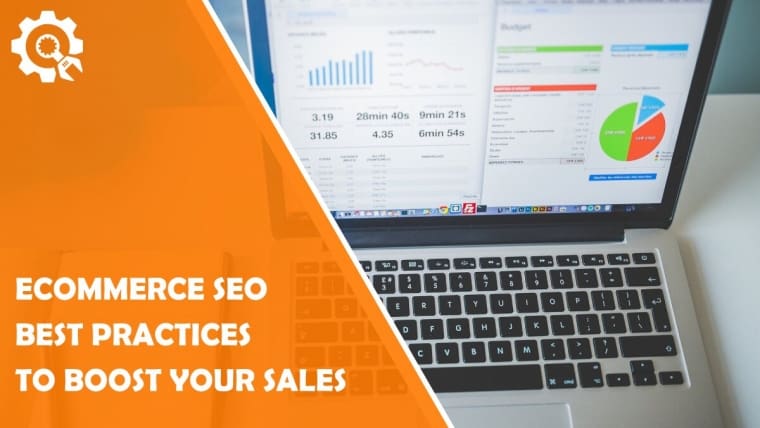If your eCommerce store doesn’t rank well in SERPs, attracting customers will be very difficult. Compared to other eCommerce marketing strategies, search engine optimization has the highest ROI, and yet, not many e-stores are set up with search engines in mind.
Instead, they rely on paid ads and social media, which are great but require constant effort and cash flow.
On the other hand, search engine optimization only requires effort up front, and zero financial investment.
Sounds tempting? We’ve put together a list of 7 eCommerce SEO best practices that will help you optimize your website to increase visibility and boost organic traffic.
1. Design Your eCommerce Website with Consumers in Mind
The design of your website and pages should add value to the overall shopping experience. No matter how great your products are, if your website is difficult to search and navigate, people will get annoyed and leave. It’s important to remember that professional SEO services should be front of mind from day one of a new website – not simply an afterthought months down the line.
Design is also important for search engine bots – if they detect that your bounce rate is high (i.e. people tend to leave almost immediately after they visit a page), your rankings will start to decline. A well-designed site will help reduce bounce rates, encourage visitors to go to a couple more pages and, as a result, boost your rankings.
If you have no clue what makes an SEO-friendly eCommerce site, take a look at your competitors. This will give you a good idea of what your shoppers might want to see in your e-store.
Make sure that your site is easy to navigate, with intuitive menus that clearly direct the visitor. And also, avoid using too many images to cut on long loading times which could revert impatient shoppers (loading times are a ranking factor too!)
2. Provide Detailed Product Information
In order to make your product information both shopper- and SEO-friendly, ensure that all details (including prices, colors, measurements, and sizes) are easy to find and understand.
All your product info should be up to date. If a manufacturer submits new information, make sure to include it right away! This is valuable for consumers but it can also help get more keywords on your page and boost your rankings.
Also, avoid hiding your prices. Even though this doesn’t affect SEO directly if shoppers don’t see a price on the product page, they’re very likely to leave, making your bounce rates higher.
Lastly, check the product images against physical items to make sure they’re accurate to size and color.
3. Write for Humans, Not Search Engine Bots
Even though we highlighted the importance of optimizing your e-store for search engine bots, everything you do should ultimately be for the benefit of the shoppers.
Always keep in mind that they are not robots. Including a couple of keywords could help improve your ratings, but product descriptions that are stuffed with keywords and impossible to understand will most likely turn shoppers away.
If you can’t seem to find the middle ground, consider hiring an experienced copywriter who will create content that both humans and bots like to read.
4. Create Original Content
If your site doesn’t have many products or plenty of content, it will be hard to rank for your chosen keywords. So, one of your first tasks should be creating interesting, unique content.
Consider adding a blog where you’ll talk about trends and news in your industry, provide useful tips, and share your expertise. A blog is a great way to add more content to your eCommerce site and provide search engine bots with something fresh to look through.
There are tons of content marketing strategies that you can use to improve your SEO and your long-form articles, case studies, whitepapers, guides, etc. that both humans and bots will love.
5. Allow Customer Reviews
About 90% of shoppers say they’re more likely to purchase products that have reviews, even if those reviews aren’t always positive. Having this in mind, it is in your best interest to allow consumers to speak their minds after they’ve bought something from your store.
Allowing customer reviews can help with SEO too, as people are very likely to use keywords in their reviews. And even though using the same phrases that already appear on your product page won’t have any significant impact, shoppers might use long-tail keywords or synonyms that could help your rankings.
6. Use Alt Text in Your Images
Using alt text in images is another great way to get important keywords on your website. When search engines crawl a website, they have no way of knowing what the images are or why they’re placed on a specific page. It’s the alt text that gives them this information and provides additional context to the page.
7. Avoid Complicated URLs
URLs can contain quite a large amount of information in a very small space: product names, category names, file types, etc. However, according to SEO standards, URLs should be as short and clear as possible, and contain keywords relevant to what appears on the page.
This type of URL helps both search engine bots and humans get the most important information and figure out where that URL leads to.
Final Thoughts
There are many ways to get traffic to your eCommerce site: paid ads, social media, email…However, SEO is the only one that is free, reliable, and relatively easy to pull off.
A well-executed SEO campaign can result in hundreds of sales. So follow these 7 SEO best practices and you will be able to stay ahead of your competitors.
